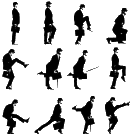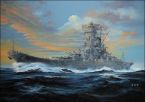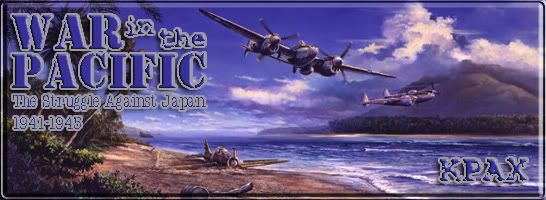rtrapasso
Posts: 22653
Joined: 9/3/2002
Status: offline

|
quote:
ORIGINAL: KPAX
So, Rtrap, if you have say three fighter units to fly CAP, set them at, say, 30k, 20k and 10k, as an example ?
Spredad teh altitudes out between the various fighter units ?
Some folks will do this... it will help prevent a low-level attack from sneaking in against a high-alt CAP, or a high-level attack avoiding a low-level CAP.
i should say that in the example before - where someone comes in at 30000 feet, and the radar-directed fighters try to intercept - that if it is LEVEL bombers attacking (alone) - that the intercept (if it happens) will occur somewhere around 30000 feet. If there are a fighters escorting, who knows where the intercept takes place? The numbers are not given in the report or animation.
If there are fighters on a sweep, the sweeping fighters will generally drop down to attack the defenders (if the attackers are at higher altitude). This is the basis of the "flak trap" defense: a defender (presumably without radar) will set his fighters at, say, 100' - the sweeping attacker will drop down to 100' to attack - and get themselves shot up by the base flak. This can be devastating (and it occasionally happened historically - pilots tend to focus on their target to the exclusion of all else, and fly into danger when they SHOULD have known better.)
If the attackers are divebombers or torpedo bombers - i would GUESS the intercepts take place near the attackers set altitude, however, since divebombers drop down to 2000', and torpedo planes to 200' - this MIGHT not be always true.
< Message edited by rtrapasso -- 9/28/2007 10:27:02 PM >
|
 Printable Version
Printable Version









 So I take it the "bounce factor" isn't that important? I would have thought that despite being sluggish at 30,000 , a P-39 diving from that altitude would be faster and more deadly than one stooging around at the same height as his opponet.
So I take it the "bounce factor" isn't that important? I would have thought that despite being sluggish at 30,000 , a P-39 diving from that altitude would be faster and more deadly than one stooging around at the same height as his opponet.






 New Messages
New Messages No New Messages
No New Messages Hot Topic w/ New Messages
Hot Topic w/ New Messages Hot Topic w/o New Messages
Hot Topic w/o New Messages Locked w/ New Messages
Locked w/ New Messages Locked w/o New Messages
Locked w/o New Messages Post New Thread
Post New Thread